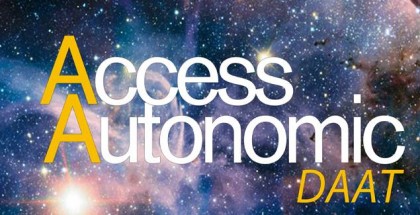FIVE STEPS: Justice
Spearheading what we can now look back on as the early seeds of Jungle and Drum & Bass as separate from the musical aesthetics of the late 80s and early 90s, with releases on seminal labels such as Moving Shadow, Creative Wax, and R&S to name a mere few, Tony Bowes aka Justice has certainly got nothing to prove. But with a new VA LP entitled ‘Nostalgic Futurisms’ on his own imprint Modern Urban Jazz and a slew of new material waiting in the wings for his forthcoming Oxymoron LP with long-time collaborator Metro, the producer is clearly not resting on his laurels as he continues to usher in this fundamental breakbeat approach into 2012’s musical palette. We caught up with Justice who gave us his Five Steps spanning a full twenty-two years.
Step 1: Origins
My first experience with drum and bass/jungle was in its early embryonic stages before it even became drum and bass. It was during the early days of the rave / hardcore scene developing with different styles and new ways of production seemed to be rife, but also sat alongside each other. You could hear Belgian techno next to house, an early breakbeat track and so on. It was at parties around town during this era that I would start to hear fast breakbeat-infused tracks. Coming from a hip-hop background these were the ones that grabbed my interest, and I wouldn’t say it was any one tune in particular being influenced but I certainly remember the first Break The Limits 12″ and hearing it on local pirate radio. Before this I can remember buying ‘£10 (To Get In)’ by Shut Up & Dance, which was an early breakbeat inspired track from two of the early pioneers.
Step 2: Introducing
The first track that I produced was alongside Blame, called ‘Death Row’. The whole experience was a learning curve – it was our first studio, first track, the whole thing. We had an engineer so it made it easier in the sense that we could do the creative work and he could do anything technical- midi patch bays etc. We really went in to do a hip-hop track but I think we were definitely influenced by what was going on around us and the different tracks we had been hearing, hence it turning into a proto-breakbeat track. The session lasted about 4 hours, we took in our samples on record, sifted through them and the track came together, with each of us having some input, playing keys and arranging the track. This was in 1991 so we were using early Casio samplers and sequencing on the Atari, a far cry from today.
Step 3: Foundation
The track that made my name I would say was ‘Aquisse’: it’s the track I am most associated with and the one I am proudest of. At the time I made the track it was a unique style that no one else was doing. It has been well documented that the track came about pretty quickly in the studio and that I taped it to listen to on the way home. The arrangement I had done by muting tracks in and out on the Atari was spot on, so the week after I returned with my cassette and copied the arrangement from the tape and worked on an ending for the track. It was one of those rare kind of studio moments you get when it all just clicks into place and you know that you have something special on your hands. At the time I was working with the guys at Vinyl Distribution and they snapped the track up for their Basement Records label. A couple of weeks later it was licensed by R & S for their In Order To Dance 6 LP.
Step 4: Present
The Nostalgic Futurisms LP I had been thinking about for a while. There were some tracks in the archives released and unreleased, that I felt were still very relevant today. When they were created they were futuristic and when I heard them back I still had the same feeling. So I started to gather together a few minds from our roster such as Cuelock, Metro, Paranoid Society, and Jason oS and asked them to write something with a nod to the past but with the future very much in mind. A few other younger producers came on board like Stereotype, from whom we received some stuff that were passed onto us by a friend and the project started to take shape. I think it’s a testament to the music that people who are unfamiliar with the older works don’t know… In this I think I have achieved what I set out to do. I think also it shows that a good musical idea stands the test of time whatever studio gear it is written on. There are some Atari Cubase sequenced numbers on there up against up-to-the-minute Logic written tracks and it’s hard to separate them. If you can write a good tune you can do it on anything. I have gone from using a whole studio in a room to having the whole studio in one Macbook.
Step 5: Future
The track ‘Dope Boy’ comes from the forthcoming LP by Myself and Metro called Oxymoron, set for release in the new year and kind of carries on from the Nostalgic theme. When we started to write the new LP we were finding loads of samples and references that took us back and had a ravey/druggy influence like you can here in this track. It just really reminded us of that era and we feel we have conveyed this convergence of the past with the present and beyond.
VA – The Nostalgic Futurisms LP is out now at Surus.










